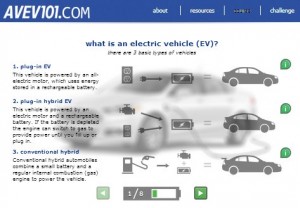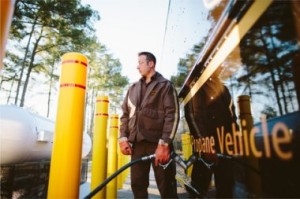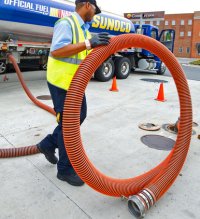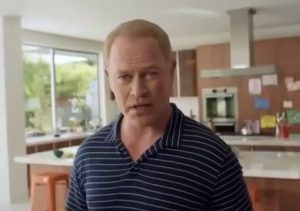 Education and accessible, clear information is needed out there to get past the stumbling block that holds consumers back from owning an electric vehicle. If you take a look at a new educational website for electric vehicle (EV) shoppers, you’ll find answers to frequently asked questions:
Education and accessible, clear information is needed out there to get past the stumbling block that holds consumers back from owning an electric vehicle. If you take a look at a new educational website for electric vehicle (EV) shoppers, you’ll find answers to frequently asked questions:
- What’s the difference between EVs, plug-in hybrids, and hybrids?
- Why lithium ion batteries?
- What do you get out of it? Why make the investment?
- What’s the latest on charging technologies?
- How long does it take to charge and how far do you travel?
AeroVironment is working with Saginaw, Mich.-based KnowWhatYouDrive on an educational initiative to help consumers take the plunge and purchase an EV and a home charging port. The free online course at AVEV101.com walks through all of the questions that typically come up for car shoppers – or those with some interest in owning an EV. Details are presented on the types of available charging stations, charging time, and how the installation process works. You can test your electric vehicle IQ and instantly earn $25, $50, or $100 coupon codes for an electric vehicle charging station and installation.
“Education is one of the key factors that will help speed EV adoption,” said Wahid Nawabi, senior vice president and general manager of AeroVironment’s Efficient Energy Systems business segment. Doug Taylor, founder of KnowWhatYouDrive, says that it can be a daunting task with all of the EVs on the market now through Ford, Nissan, Fiat, and other OEMs. KnowWhatYouDrive works with charging station supplier Eaton on its website, and offers a discount program for EV charging stations.
AeroVironment has been committed to making the EV ownership and charging experience more accessible to consumers. It launched a dealer program last year offering a turnkey residential charging package. Consumers can purchase the EV and the charger in combination at the time of sale and build it into the financing. The home installation process is built into the transaction so that it can take place in a faster, more seamless way than it typically happens.




